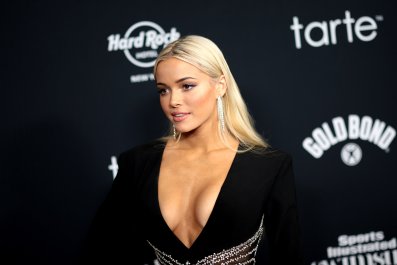Revisiting the early days of Strictly Come Dancing was to be reminded of more innocent times for the scandal-plagued series. The first ever episode – aired again on BBC Four as part of a season of Saturday-evening entertainment repeats – might have looked dated but it felt more joyful. I hope BBC bosses tuned in, because it summed up the spirit their flagship franchise badly needs to recapture.
In 2004, putting ballroom dancing back on prime-time TV was a huge gamble. The much-missed Bruce Forsyth introduced the unpromising format thus: “Eight celebrities paired with eight professional dancers. Let the battle of the ballroom begin.” Even the most optimistic footwork fan wouldn’t have predicted that ballroom battle would still be raging 20 years later.
With less at stake – no career boosts, lucrative endorsement deals or social media stardom – the original Strictly was less cut-throat and pressurised. Couples seemed more worried about falling over on live TV than they were about scoring perfect 10s. As the show bids to bounce back from a summer beset by negative headlines, it would do well to remember that tripping the light fantastic is supposed to be fun.
This show was shorter and snappier, with minimal padding and judges’ critiques boiled down to one-liners. Without today’s desperation to attract a young audience, routines resembled ballroom and Latin styles, rather than fancy-dressed prop-fests. The judges were tougher when it came to basic content and illegal lifts.
Our Strictly spectacles aren’t entirely rose-tinted. There were glimpses of training-room tension when teak-tanned bargain hunter David Dickinson snapped at partner Camilla Dallerup: “Let me get one thing clear here, I’m trying my best!” A premonition of future furores came when Forysth quipped: “Over the next eight weeks, you’ll see sequins fly, frocks being flung and bad-tempered tantrums. And that’s just in the boys’ dressing room.” You didn’t know the half of it, Brucey.
Much amusement came from how fresh-faced everyone looks. Tess Daly resembled her own daughter. The late Len Goodman had hair. Craig Revel Horwood was gelled and cheaply jacketed, although his acid tongue was intact. “Dull, dull, dull,” was his verdict on newsreader Natasha Kaplinsky. She would go on to win the inaugural Glitterball Trophy and invent the dreaded “Strictly curse” with partner Brendan Cole.
Arlene Phillips, later unjustly fired, was the judging panel’s sole female. Most of the pros are long forgotten (Hanna Karttunen or John Byrnes, anyone?). The set was wobbly and camerawork less slick. Rather than on the “Clauditorium” balcony, post-dance interviews took place in a cramped dressing room.
Goodman hadn’t yet coined his trademark cry of “Seveeen!” Indeed, both the standard and scores were lower. The average mark was six points, compared to 7.5 nowadays. Top of the launch leaderboard were operatic diva Lesley Garrett and a certain Anton du Beke. Dear old Anton, who has since swapped his dancing shoes for a scoring paddle, would rarely hit such dizzy heights again.
It might have been rough around the edges, but this was Strictly as it should be: a razzle-dazzle throwback, full of amateur charm, have-a-go pluck and proper hoofing. Even if a sequin-spangled David Dickinson pelvic thrusting to Sex Bomb will haunt my nightmares until this autumn’s series arrives.
Disclaimer: The copyright of this article belongs to the original author. Reposting this article is solely for the purpose of information dissemination and does not constitute any investment advice. If there is any infringement, please contact us immediately. We will make corrections or deletions as necessary. Thank you.




